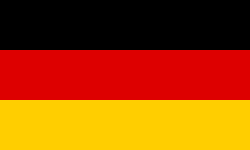PET vs. nylon mesh
Which material is right for me?
For our common pluriStrainer, mit 40, 70 und 100 µm pore size, we offer two different mesh materials: PET and nylon. To help you decide which material is best suited for your application, we have summarized the key properties of PET and nylon mesh below:
Both materials are suitable without restriction if you are working with aqueous solutions or media such as wash buffer, cell culture medium, PBS, HBSS or RBC lysis buffer in the physiological pH range
If cells, spheroids, tissue or other sample material are to be mechanically digested before flowing through the pluriStrainer, PET fabric should be selected due to its higher strength and stability.
For a phenol-chloroform extraction with the pluriStrainer, we recommend the PET tissue (an incubation time of 15 minutes showed no restrictions with regard to the quality of the DNA, RNA or proteins in our tests).
When using acetone, the nylon fabric is recommended due to its better resistance. However, the PE housing is only partially resistant to acetone. Short-term exposure at 20°C is possible. Both materials are sufficiently resistant to ethanol.
If you are working with more concentrated acids or bases, you should choose PET fabric for acids and nylon fabric for alkaline solutions.
|
PET |
|
Nylon |
|
|
|
Aqueous media in physiological pH ranges (e.g. wash buffer, cell culture media, PBS, HBSS, RBC lysis buffer) |
✔ |
no known restriction |
✔ |
no known restriction |
|
Phenol-Chloroform (e.g. for DNA extraction on the sieve) |
~ |
limited resistance but suitable for short-term contact |
~ |
limited resistance not tested |
|
Acetone |
~ |
No consistency |
~ |
limited resistance (the screen mesh is resistant, but the PE housing is only resistant to a limited extent) |
|
Ethanol |
✔ |
good |
✔ |
good |
|
Acid |
✔ |
good |
~ |
limited resistance |
| Base |
~ |
limited resistance |
✔ |
good |
|
Mechanical shredding (e.g. comminution of cells, cell clusters, spheroids, tissue, plant material) |
✔ |
good the mesh is robust and stiff |
~ |
Limited durability the mesh is soft and very flexibel |
|
Maximum working temperature (dry) |
|
150°C |
|
115°C |
Please note:
The stability data are guide values and do not exclude individual applications. Material stability also depends on the concentration of the solution (acid or base), the duration of contact and the temperature. Brief contact with a chemical can be harmless even with more sensitive fabric materials, so both PET and nylon fabrics are suitable for your application. Please note that the housing material is PE and must therefore also be included in the decision-making process.
For the PET mesh, you have a wider range of mesh sizes available. Therefore, if the pore size of the pluriStrainer mesh is the relevant factor for you, you will usually find the right one for you in our pluriStrainers with PET mesh!

